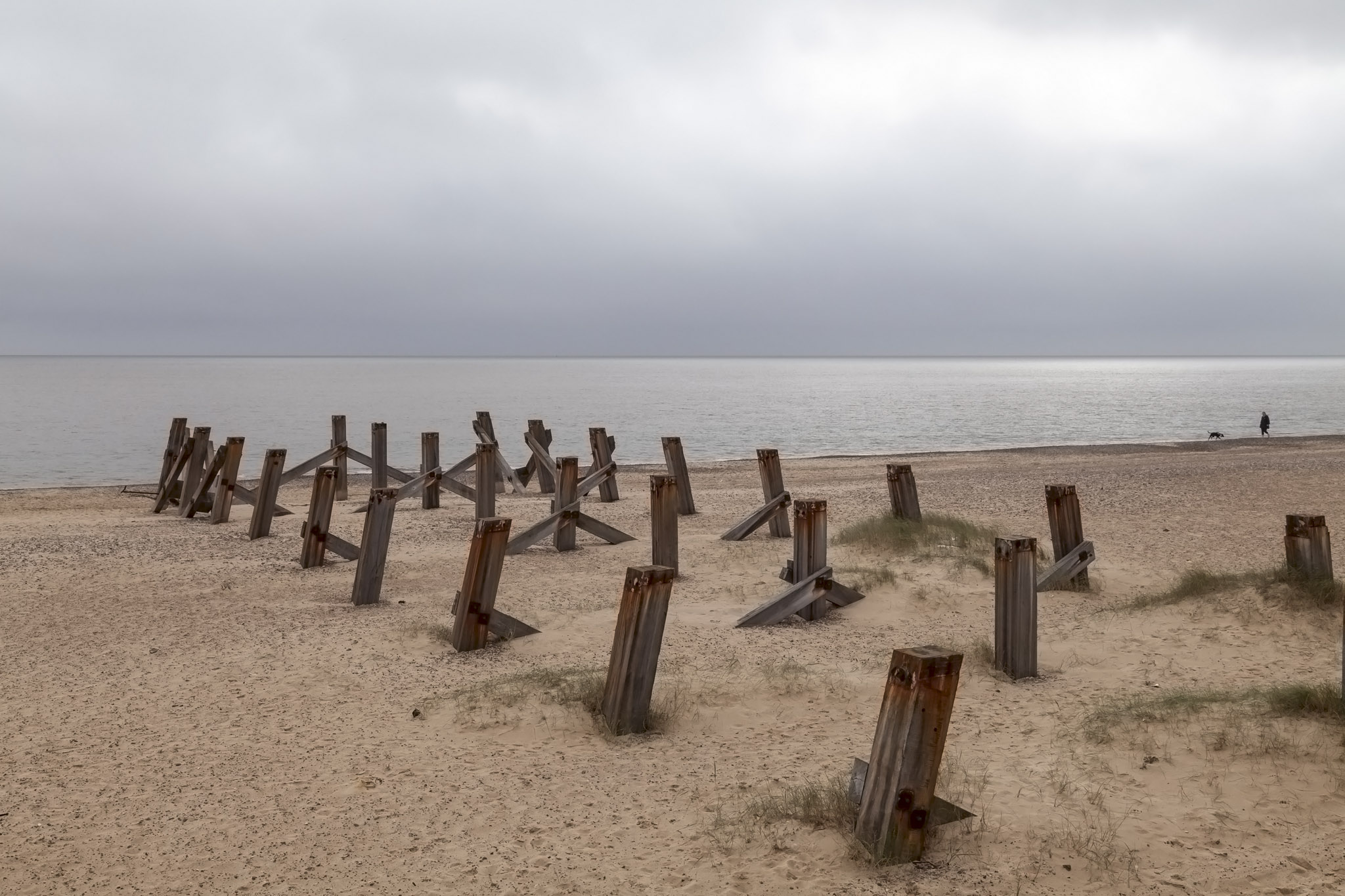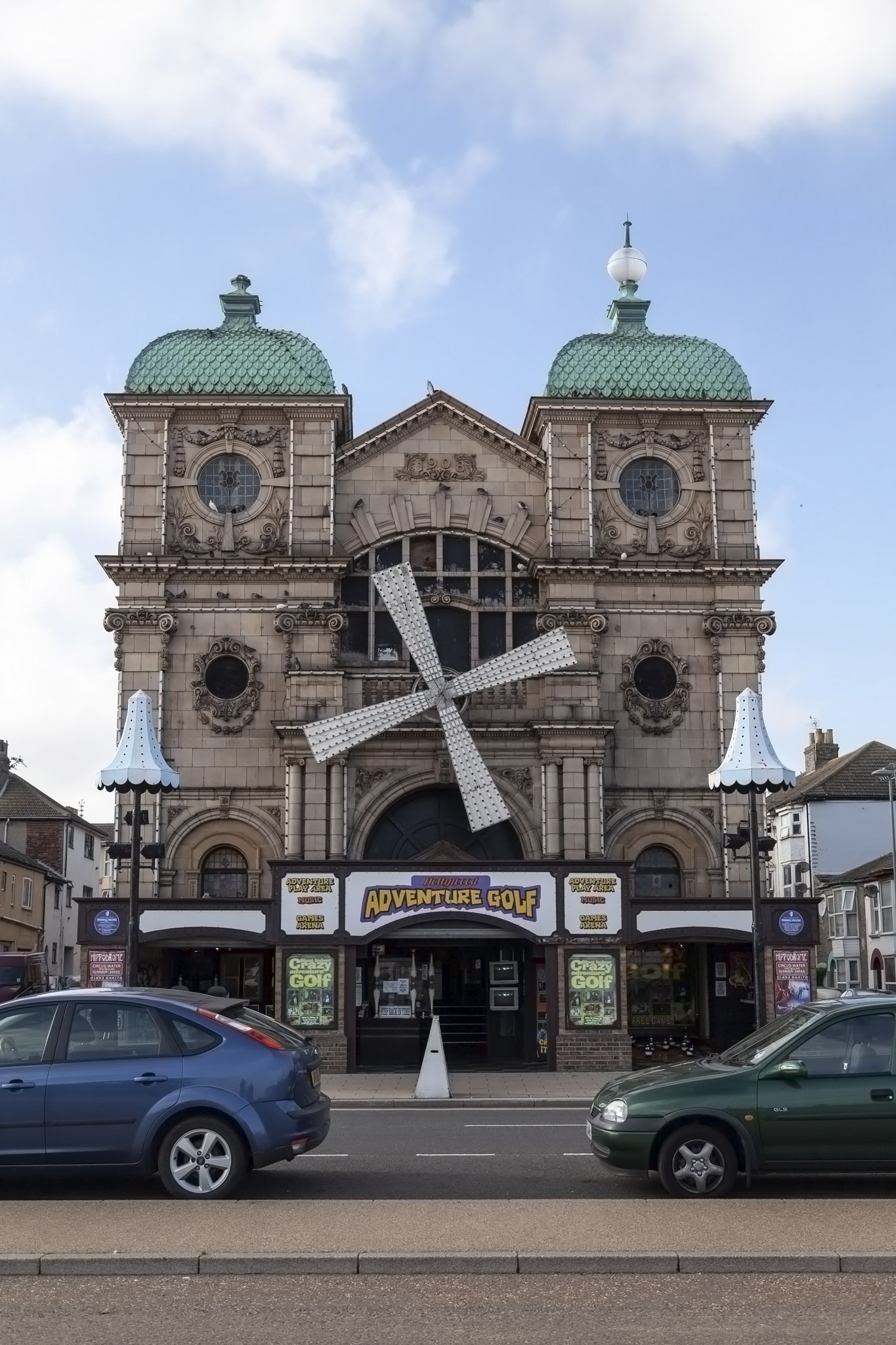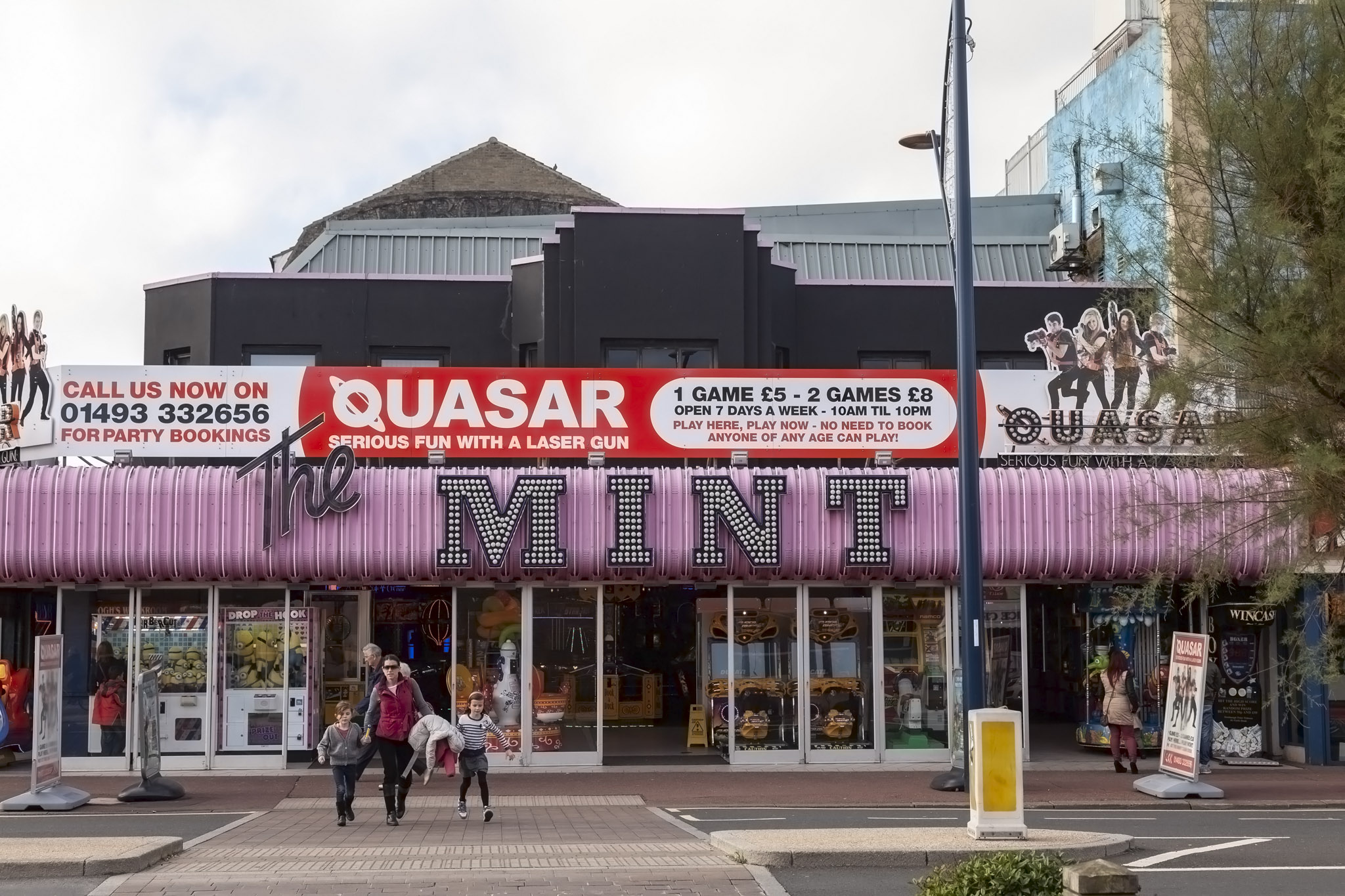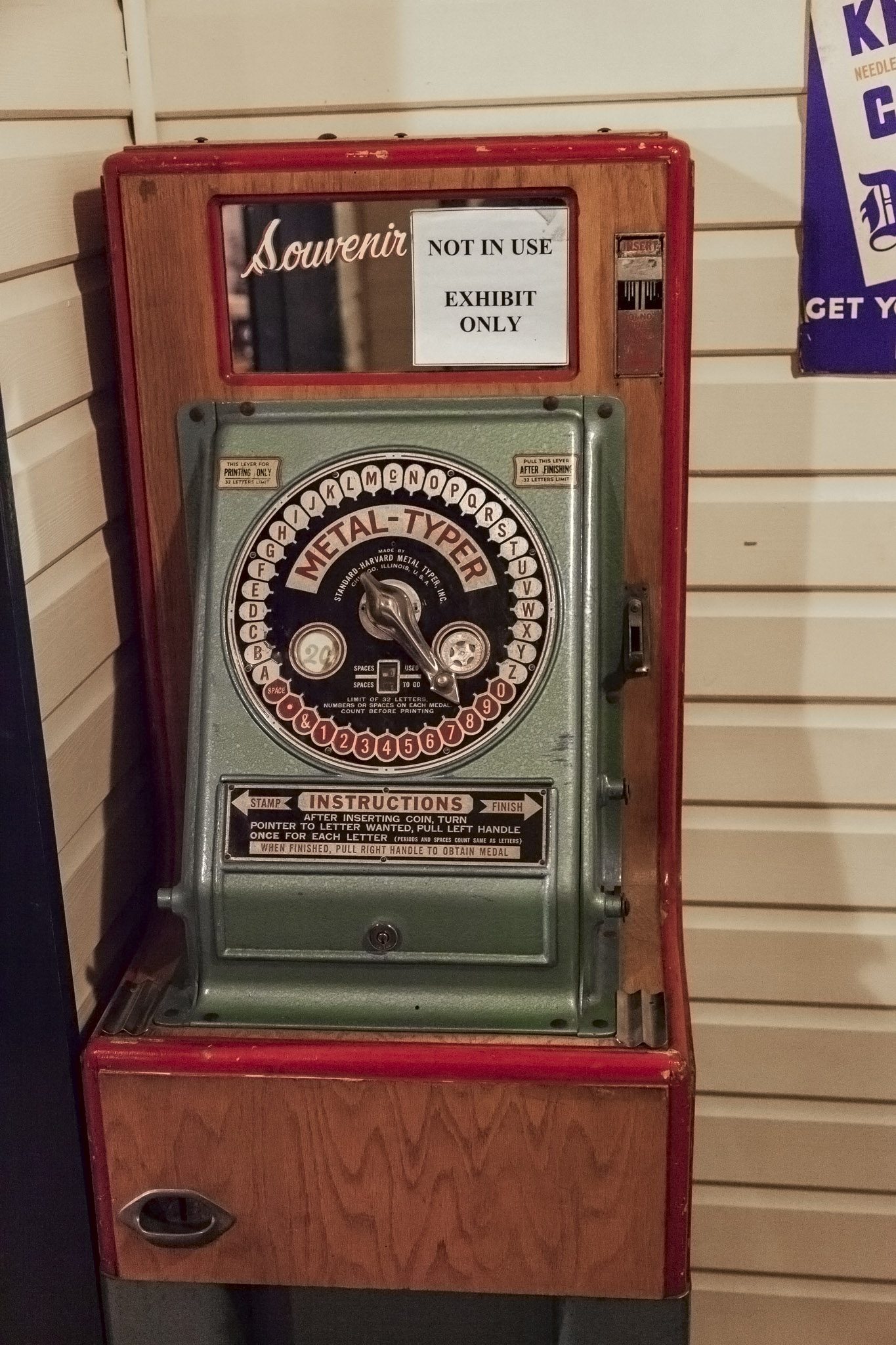It’s time for a disclaimer up front: If you’re thinking of paying a visit to Norfolk, and to Great Yarmouth in particular, and if you’re looking for an interesting museum activity to occupy your mind, and if that’s the reason you’ve stumbled upon this page, then you’re in for a disappointment. The Yesterday’s World museum of which this post recounts an experience visiting closed down shortly after we popped along and wandered its rooms and displays in 2013. It was nothing to do with us, I believe. If you’re here for any other reason then you’re also in for a disappointment but that’s just part and parcel of reading anything on this site.
So, with that out of the way, let’s set the scene for a day exploring the seafront of Great Yarmouth one November in the early 2010s…
For our fifth wedding anniversary we decided to explore a bit of the country we’d not seen together before: Norfolk. Norfolk takes a while to reach in a straight line so our short break from the drudgery of work started with one night in a fancy, stately home hotel near Northampton, the plan then being to drive across to Norfolk on England’s east coast, use a seaside resort as a base, and see what the region had to offer in terms of sights for a day before heading home. It was never our plan to do anything else other than use the seaside resort as a base so we didn’t really care too much what there was in the resort we’d pick; so long as it had pubs we’d be fine in the evening. Great Yarmouth won the prize in the accommodation raffle, mostly because it amused us to think that we might start using the town’s name as an expletive.
Our fancy first night’s stay and meal at Fawsley Hall was lovely and we set off for Norfolk the following morning. We stopped in Peterborough because it was on the way and we very much enjoyed a wander through a museum there with the 1950s and 1960s city planning guides being the highlight for me. Yes, I’m the sort of person who finds urban planning blueprints fascinating, what of it?
On we then continued towards Great Yarmouth. We weren’t concerned with getting there quickly, knowing only that we’d prefer to be past Norwich before rush hour, something which on paper seemed like a fairly easy task to accomplish. Oh, if only.
It ended up taking us four months to reach Great Yarmouth. Admittedly, that’s subjective time; an effect of regional time dilation caused by the flatness of Norfolk stretching to infinity and cancelling out one of the more interesting dimensions we take for granted; an effect of being in a queue of traffic all on the same road, all behind a tractor, all unable to pass safely because of the queue of traffic heading in the opposite direction, all behind another tractor; an effect of the most interesting thing to distract the attention being watching grass grow, wither, and die in real time. I don’t remember passing Norwich although we surely did, possibly using the gravitational mass at the centre of its ring road as a slingshot to travel back in time and retrieve those missing months on the road ahead of our arrival in the seaside resort that was our destination. I don’t remember much about our hotel in Great Yarmouth either, although it was the Willow Tree Lodge Hotel and probably perfectly adequate for our needs. I only remember the following morning.
Those months and months in Norfolk…
It was a long day. It wasn’t months.
Months. Your memory has been affected by the time travel. Mine too, though to a lesser extent. Anyway, those months…
It was a day. Get on with it.
Well, I don’t want to get in the car and explore Norfolk today. Fancy a walk around the town instead? Hit the seafront. See what’s around.
In November?
It’s what we do. Check out some pubs, that sort of thing?
Sounds like a plan.
It wasn’t a plan. It was the opposite of a plan because we didn’t know anything about Great Yarmouth. It is, however, what we did. We wanted to spend a long time not sitting down for obvious reasons and so we walked from our hotel southwards along the beach to see what we could see. With some not particularly great weather accompanying us in the morning my camera didn’t make an appearance until we’d stretched our legs for around three kilometres. The first thing to catch my eye was what we initially thought was evidence of some old mining operation along the seafront but which turned out to be part of the closed Log Flume ride at the Pleasure Beach amusements.
The sign for Great Yarmouth Pleasure Beach behind the cage-like fencing on this overcast morning seemed to be setting a tone for the town of faded glory, and there was a lot of truth to that but this is still the sort of thing we like to see. It’s certainly preferable to visiting these sorts of places when they’re rammed with noisy families and it’s why we tend to travel to seaside resorts out of season.
The southern end of the pleasure beach contained some evidence of Great Yarmouth’s (well, Norfolk’s, really) naval heritage, something we didn’t know it had because there didn’t seem to be anything resembling a port on the map. Some clearly naval-style buildings (that we rightly guessed were part of a former hospital) were present inland (we’ve seen enough from our own neck of the woods to recognise the sort of things the admiralty likes to have built). A little farther south there was a monument of Britannia, oddly facing inland. Some exploration of the boards explaining the monument around its base provided the answers to the questions bubbling up in our minds. No, the builders weren’t demonstrating an example of being Normal for Norfolk; the Britannia monument was instead dedicated to Lord Nelson and his victories at the battles of the Nile, Copenhagen, Cape St Vincent, and Trafalgar. Britannia was apparently facing towards Nelson’s birthplace linking the seaside resort to one of Britain’s most famous people and also linking Great Yarmouth to our home city of Portsmouth since that’s where HMS Victory can be seen to this day.
With us out of sights to see as far south as we’d been walking we decided to start heading back, this time with the intention of paying a visit to anything open that looked interesting. The sky and sea were matching pale greys and the grass lacked vibrancy. None of the amusements were open and their empty, quiet states with faded and poor graffiti adorning walls lined with barbed wire were the very antithesis of fun. Now, if you’ve read my very brief review of Blackpool then you might think that Great Yarmouth would rank similarly in my reckoning but you would be wrong. The visible appearance of anything is only one part of what makes it attractive; there is that other, indescribable quality that must factor into things too. Blackpool’s ranking is its own. Great Yarmouth, like all other seaside towns and cities we’ve visited, we liked.
Our northward amble was taking us towards Wellington Pier, one of two piers that Great Yarmouth has. Regular readers of this site will know that I am fond of a pier. This pier dates to the middle of the nineteenth century, and in the early years of the twentieth century a glass and iron Winter Gardens structure was transported from Torquay and installed. Jim Davidson, an entertainer to a certain type of person, leased the pier in the 1990s and invested a lot of his own money into developing the buildings, much of which has subsequently been closed or removed. Good.
Next to the pier was the the aquarium and if there’s something we like almost as much as piers in seaside resorts then it’s aquariums. I’ve posted pictures from our visit to Great Yarmouth Sea Life Centre before so if you want to see what fishes were alive and behind glass in 2013 then you know what to do.
The weather was brightening up by the time we’d left there and those staples of any tourist hotspot along the English coastline, the amusement arcades, which might otherwise have seemed sad under dreary skies now had a sparkle and glow about them; no doubt helped by some garish colour schemes on display. They’re cheesy, they’re sleazy, but we have a bit of a soft spot for popping into one of these dens specialising in assaults on the senses, and parting with some coins in the hope of winning something very nearly utterly worthless. On this trip to Great Yarmouth, however, we made do with simply passing by the exteriors as we’d spotted something a little farther along the seafront that looked interesting.
That interesting-looking thing was, in its own words, “a glorious emporium of the past”. I like museums in general, and these sorts of places that bridge the gap between museums and junk shops, filled with memorabilia in often questionable condition, I find particularly engrossing. They are far more likely to evoke some strong memory of childhood or even vicarious nostalgia through photography or accounts on display. Sadly for you, you cannot visit Great Yarmouth’s Yesterday’s World museum for the reason outlined in the opening paragraph of this post. And again, I’m pretty sure that our visit had nothing to do with its subsequent closure, but if you are the owner of a business who wants to increase the risk to a rival then we are open to travel-funding offers. You will simply have to make do with a snapshot of how things were in the place that presented snapshots of how things were which seems somehow quite appropriate for Yesterday’s World, and I’d like to think would have been what it would have wanted were the option of not remaining open as a viable business not available.
We enjoyed a bite to eat and a cup of tea in a spot attached to the museum before continuing with our bimble back towards the hotel with the hours of daylight left starting to diminish quite rapidly. Our walk took us past a few more amusement arcades and then to the second of Great Yarmouth’s piers, the Britannia Pier, a structure with a great history if you’re a fan of things burning down. The original nineteenth century pier on the spot was damaged in two storms and torn down at the turn of the twentieth century. Seven years after the new pier was opened it was destroyed by a serious fire. Two famous militant suffragettes, Hilda Burkitt and Florence Tunks, burned the pier down again in early 1914. A ballroom opened in 1928 burned down four years later. The replacement ballroom lasted until 1954 when fire took it again but it’s remained inferno-free ever since despite some great opportunities to relive old times when Jim Davidson or Roy Chubby Brown have performed in it.
The view from the end of the pier gave us a good chance to see what a lovely beach Great Yarmouth had, and while they’re not to everyone’s taste we also enjoyed the sight of the offshore wind farm.
There wasn’t a lot else to see as we retraced our steps back to our lodgings where we would freshen up before heading out for the evening to enjoy some local beverages and food.
We enjoyed Great Yarmouth because it was a seaside resort that wasn’t Blackpool, but we didn’t enjoy getting to Great Yarmouth. Much of the escape from Norfolk is also erased from memories although we did briefly hit Ipswich in nearby Suffolk and Colchester in Essex on the lookout for things of interest, sadly without a lot of joy. We shall have to make a return visit to this part of the world in the future but perhaps not until faster than light travel is more commonplace.
































































































